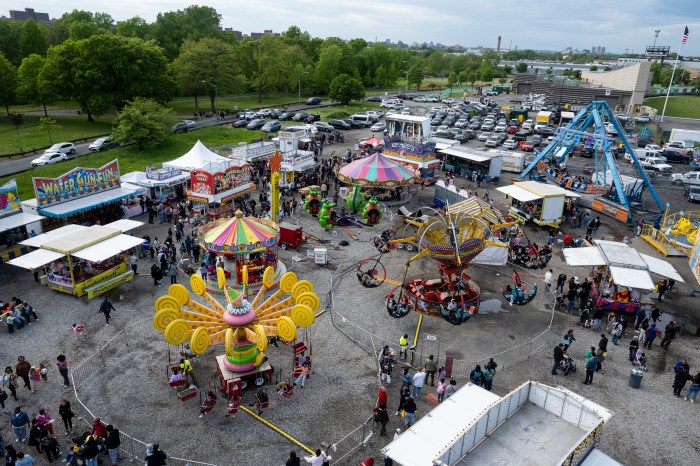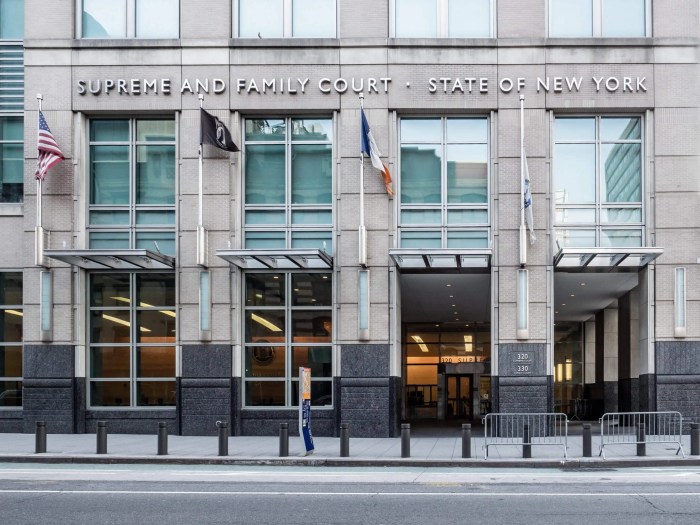By Lesley Sussman
Just when you thought it was safe to walk the streets of the East Village at night — here come the rats.
Concerned residents who attended a Lower East Side Community Rodent Forum last week at P.S. 63, at 121 E. Third St., not only expressed their fear and loathing about what they described as a worsening rodent situation, but also demanded swift action from a panel of city officials.
They told representatives of various agencies — including the New York City Department of Health and the Mayor’s Office Rat Task Force — that the rats were taking over the neighborhood at night and could be found everywhere from vacant lots and parks to community gardens and construction sites.
“I try not to come home late at night anymore,” said City Councilmember Rosie Mendez, who, along with Councilmember Alan Gerson and Community Board 3, sponsored the forum in response to community complaints. “It scares me to see these rats running around and playing by the garbage,” she said.
Mendez added that the rats were “The largest growing population in the East Village. Our problem has worsened here because of all the bars and restaurants who put out all their garbage at night. We have more of these establishments then any other community.”
Echoing the councilmember’s concern was Susan Stetzer, district manager of Community Board 3.
“This problem really is a crisis,” she said. “There are areas where people can’t even cross the street at night because of the rats. This year we didn’t even have the little Halloween parade in Tompkins Square Park for the kids because of all the rats.”
Stetzer blamed the large amount of new construction for the problem as well as the droves of people who flood into the neighborhood on the weekends to soak up the nightlife.
“We can’t accommodate the influx of people and they create a lot of garbage,” Stetzer said.
Rats have also been a persistent complaint further Downtown where there is lots of construction. Fulton St. in particular, site of a large water main project, has been an oft-cited street in recent months.
At the Lower East Side forum, which was attended by about 80 people, residents gave firsthand accounts of their close encounters with rats on blocks where they lived. Luther Stubblefield, founder of A Magical Garden on F.D.R. Drive and vice president of the Baruch Houses Tenant Association, said the housing development experienced problems with rats four years ago but had gotten it under control. Now, he said, the problem has re-emerged.
“We’re seeing a huge increase of rats,” he said. “The city had to come out and destroy one-third of our garden to get rid of the rat nests. That’s why I’m here tonight, to see if we can get a handle on this situation. If we can’t, we’re going to have to lose our beautiful garden and we’ve invested three or four thousand dollars in it.”
City officials told residents they were not unaware of the problem and were working hard to control the situation.
“Rats can be a property, block or neighborhood problem and it requires a coordinated response,” said Rick Simeone, director of pest-control services for the Department of Health and Mental Hygiene. “Property owners, tenants, businesses and government need to work together.”
Simeone, who also cited the mild winters as another reason why the rat population was increasing, said the problem of rats citywide was so serious, that his department had even hired one of the nation’s foremost rodentologists to help come up with a solution.
“I’ve been with the Department of Health for 10 years and I really care about this problem,” he said. “We all do.”
Representatives from the Department of Homeless Services, Parks Department and the Department of Sanitation also addressed residents’ concerns.
Ray Carrero, director of the Quality of Life Unit of the Mayor’s Office Rat Task Force, told residents that, “We’ve taken tours of the affected areas and have seen the problem. This is a multifaceted problem and it needs a multifaceted approach.”
Carrero said the Mayor’s Office intends to crack down on bars and restaurants that don’t properly store their garbage or that put it out on the streets too early so that it sits there for hours.
“We’re going to launch a one-month educational outreach program and then step up our inspection and enforcement,” he said. “We’ll close restaurants that don’t cooperate with us.”
Carrero added that visitors to the neighborhood must also learn that “They just can’t throw a half-eaten hot dog in the park or on the street because you’re feeding the rats when you do so.”
Parks Department District Manager Robert McLean singled out irresponsible dog owners as one reason for the booming rat population.
“They go to the park or wherever and they don’t pick up after their pets,” he said. “The rats love to eat dog feces. What I’d like to do is increase the fines.”
One agency which came under some flak from residents was the Department of Sanitation. Irwin Seltzer, an E. 10th St. resident, said there were “a million rats” on his block and that one garbage collection a day was not enough.
“You’ve got to try and make a schedule where garbage is picked up late afternoons or early evenings, so it doesn’t sit overnight,” he said.
Another resident, Roanna Juddelson, who lives on E. Seventh St., said the Department of Sanitation prefers that garbage bags be brought to the curbside for pickup — not garbage cans.
“This is O.K., except for food garbage,” she said. “The night before and the morning of collection, out comes the food from the bags and it’s banquet time for the rats. I want the superintendents to be allowed to bring garbage cans curbside with bags containing food tied up inside them.”
Another suggestion for the department came from Valerio Orselli, of the Cooper Square Mutual Housing Association.
“We have increased garbage but no increase in collection,” he said. “We need another garbage collection day.”
Responding to some of these concerns, Iggy Taranova, a community affairs officer for the Department of Sanitation, said it was alright for building supers to bring garbage cans curbside, but that those cans must not remain standing there after collection or tickets would be issued.
“But I don’t think you can ever have enough cans for the food produced in some of these buildings,” he added.
Another issue that was raised during the meeting involved the use of rat poisons. Lorcan Otway, a local resident, said that in Tompkins Square Park and in other locations throughout the East Village and Lower East Side, red-tailed hawks and other birds were dying from either eating the pesticides or feeding on rodents who had eaten the poison.
“It’s not only about the birds,” Otway said. “What if a dog or, even worse, a kid picks up these poisons or someone with bad intentions?”
Simeone said that his agency was well aware of this problem.
“We’re concerned about hawks, squirrels — even dogs,” he said. “We’ve put a moratorium on baiting in Tompkins Square Park and we’re working hard on a program to protect all the birds. We don’t need to use poisons first. What we need is an integrated approach.”
On a lighter note, at least one resident walked away from the meeting completely satisfied, after being reassured by the panel, that the rodents running around her stove and apartment were mice — not rats.
“When are we going to talk about the mice problem?” she said.
After the meeting, both Councilmember Mendez and Peter Pastor, a legislative aide to Gerson, who was unable to attend the forum, said the session was an excellent start in the right direction and that they would ratchet up efforts to do more about the situation.
“Blocks and communities are going to have to get together on this,” Mendez said, “and I’m going to continue to work with them. On longer term problems where the rats went away for a while and then returned or there’s a problem with a developer, I’m going to hold follow-up meetings with city agencies to set a strategy and see what the follow-up should be.”















